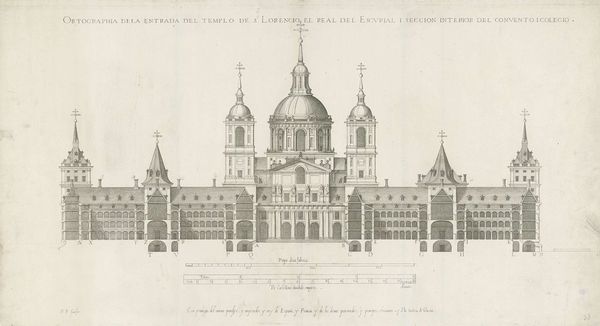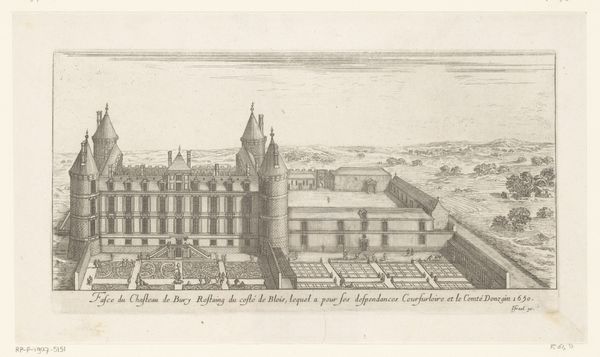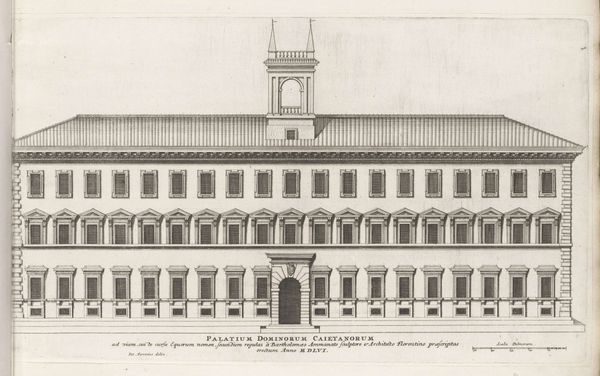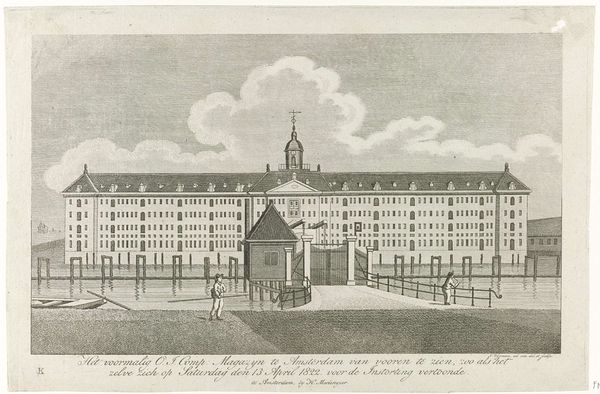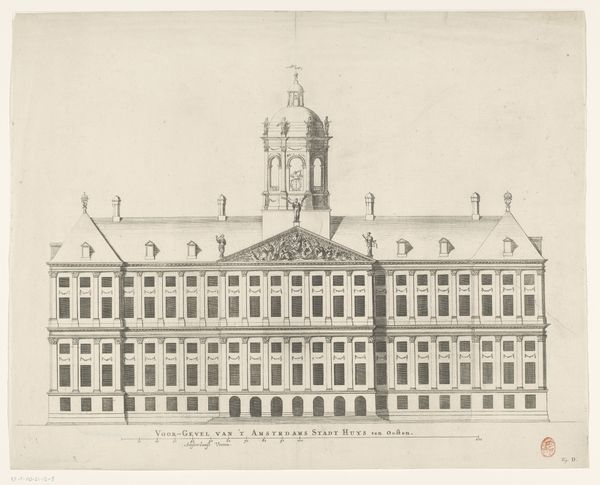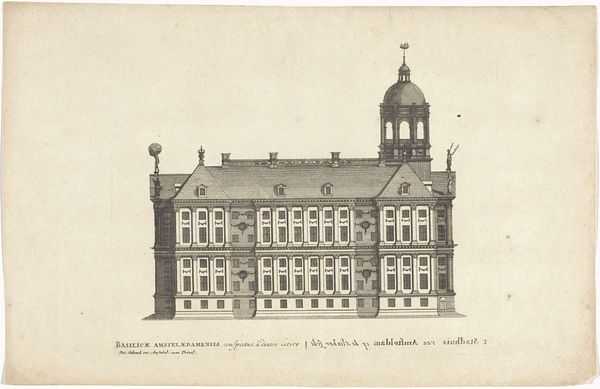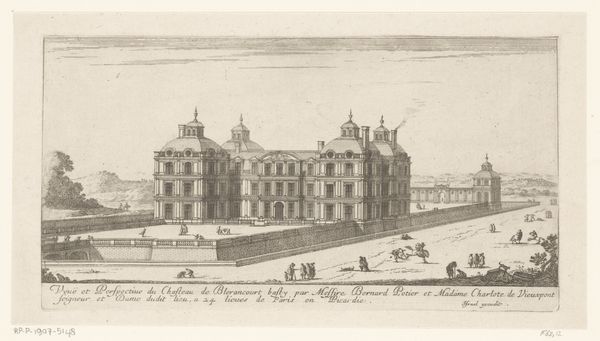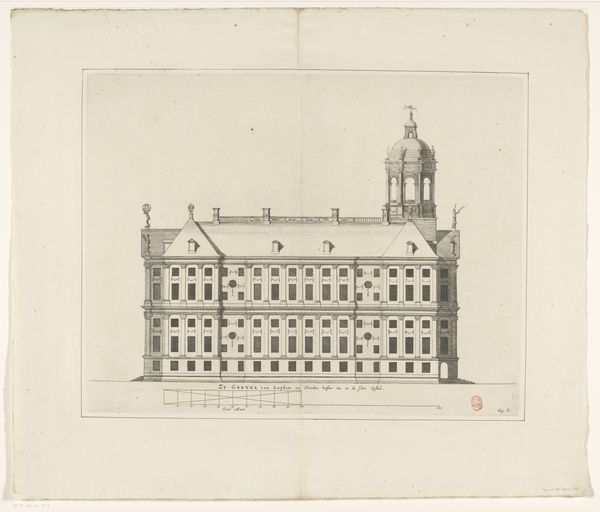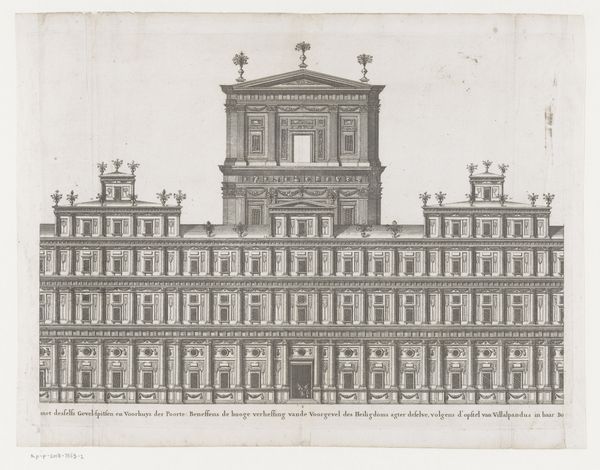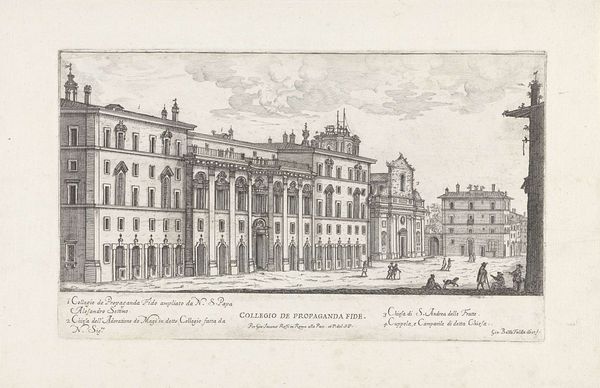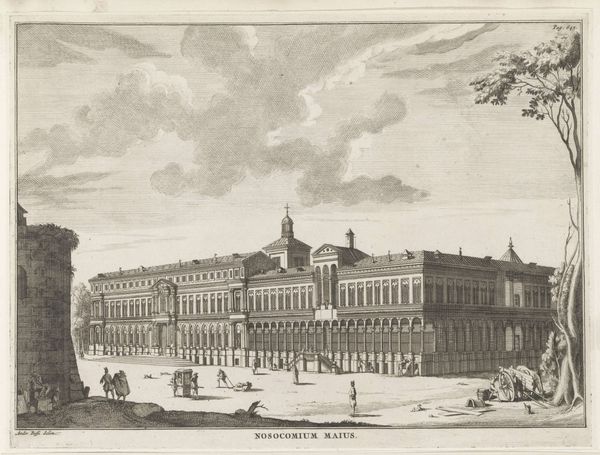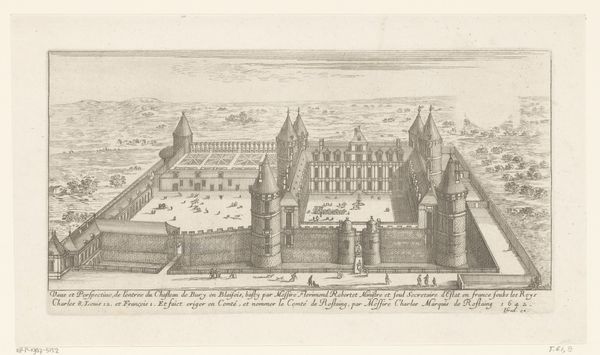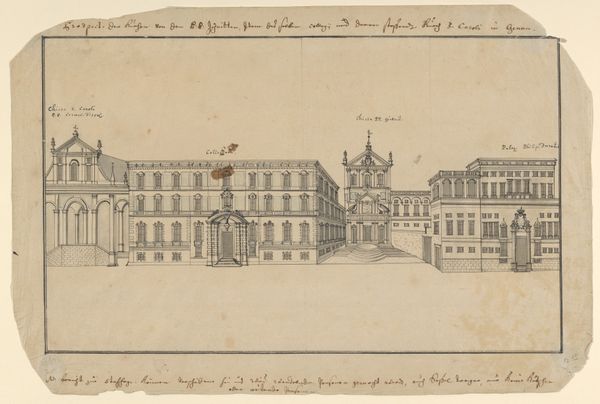
Zijaanzicht van de zuidkant van de kerk en het klooster van San Lorenzo en de koninklijke appartementen 1583 - 1587
0:00
0:00
drawing, print, engraving, architecture
#
drawing
# print
#
landscape
#
11_renaissance
#
engraving
#
architecture
Dimensions: height 370 mm, width 685 mm
Copyright: Rijks Museum: Open Domain
Editor: Here we have "Zijaanzicht van de zuidkant van de kerk en het klooster van San Lorenzo en de koninklijke appartementen" by Pieter Perret, dating from the late 16th century. It's an engraving, an architectural rendering. It looks so precise and grand. What's your read on this? Curator: It’s fascinating to see this representation of El Escorial. What strikes me is how the building becomes a statement of power. This wasn't just a church or a monastery; it was a royal residence, a symbol of Spanish Habsburg authority. Think about the context – the Counter-Reformation, the vast wealth flowing in from the Americas. How does this image portray that power? Editor: Well, there’s the sheer scale of it all, I suppose. The repetition of windows suggests an almost industrial level of output… of architectural mastery. But is it supposed to inspire awe, or does the uniformity hint at something else? Curator: That uniformity is key. Consider the political messaging at the time. Philip II wanted to project an image of order and control. The grid-like façade mirrors that desire for rational, absolute governance. Do you think that connects to the religious climate of the period? Editor: Yes, the emphasis on order could be reflecting the religious authority and its fight against protestant reformers at the time…it seems less decorative compared to earlier architecture, a turn to simple, but large expressions. Curator: Precisely. It moves away from the ornate excesses of earlier styles. It represents a shift in cultural values, mirroring the gravity and seriousness associated with the Spanish monarchy and its religious policies. So much communicated in one image! Editor: That's fascinating. I hadn’t considered how intertwined the architectural style was with the political and religious messaging of the time. Curator: It is amazing how buildings are more than bricks; it is the cultural ambition embodied. Editor: Definitely, it adds a completely new layer to understanding the piece. I am grateful to learn more!
Comments
No comments
Be the first to comment and join the conversation on the ultimate creative platform.
